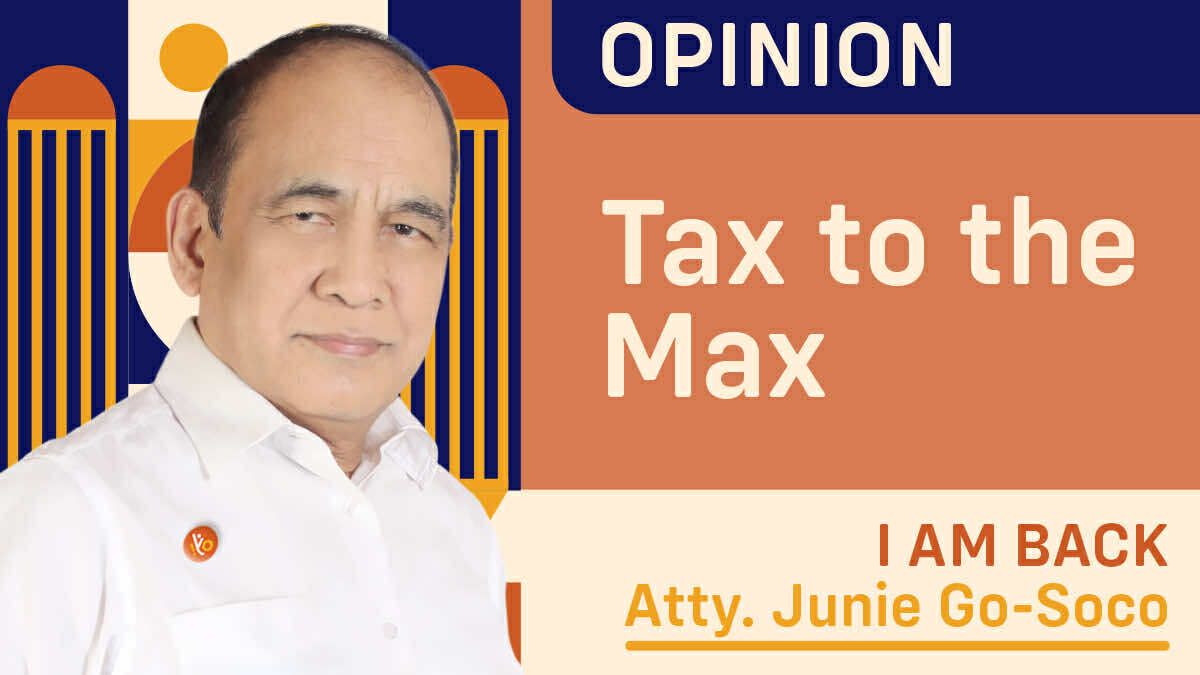An important law that was put into effect last July 1, 2025 is the Capital Markets Efficiency Promotion Act (CMEPA). The most notable part of this law is that it imposed a tax of 20 percent on income from long-term (5 years or more) deposits. These were exempted from such tax prior to July 1. What may have caused panic among bank depositors is the social media post showing a headline that savings accounts will be slapped a 20 percent tax.
That headline is fake news. The savings accounts will not be taxed like it would be gone in 5 years at 20 percent tax per year. The truth of the matter is our savings accounts are already imposed a 20 percent tax on interest income from that savings account. That tax has been there since 1998. It is automatically withheld by the bank from our bank balance, so we rarely notice it. There seems to have been no big howl about it. Depositors just accepted it as fact of life (Or maybe social media was not active at that time).
Note that such a tax was not imposed at that time on time deposits of five or more years. That exemption has been lifted.
The purpose in 1998 must have been to provide long-term depositors more funds for their future consumptrion expenses and capital investments rather than give that 20 percent to the government in terms of taxes. The government has now taken that opportunity and privilege away.
Now that these long term deposits are subjected to the tax, it should be those who have these deposits who should howl against this “tax to the max” approach that the present administration has launched.
Data shows that time deposits constitute 30 per cent of total deposits; that amounts to 5.88 trillion pesos out of 20.37 trillion pesos in total deposits, with around half of these, 2.94 trillion being long-term deposits. If interest income is 5 percent per annum then this income will amount to 147 bilion pesos which, when multiplied by 20 percent will add up to an annual tax take of 29.4 billion pesos. Not bad.
This 147 billion pesos is, however, only a fraction of the estimated national government budget deficit of 1.5 trillion pesos in 2025. Still a drop in the bucket. ( A better way is cutting back on expenditures - like the pork barrel of legislators)
The argument put forth by the government using an esoteric name “Capital Markets Efficiency Promotion Act” is that this contitutes fairness and will level the playing field, meaning all deposits are similarly taxed. It must, however, be noted that prior to 1998 bank deposits were not taxed at all. And the purpose of not imposing a tax on it was to encourage private investments, the private sector being the engine of growth.
The new tax will hit depositors who have long term deposits because they are planning for their retirement. If this tax was not imposed, they would have more money when they retire. They can no longer hope for that because govenment will take away 20 percent of the income from long-term deposits so it will have money for its budget.
This tax will also reduce the money available for private investment projects. The amount that will now go to the government will no longer be available for private sector projects but will now go to government projects. This tax will have the effect of reducing funding for private sector projects particularly for industries.
With the possibility that this fund will only go to the pockets of corrupt offoicials, the public has every reason to be wary and suspicious and to not think highly of this move spearheaded by Finance Secretary Ralph Recto, the principal author of the 2007 Expanded Value Added Tax (remember?). He lot his snatorial bid supposedly because of this law.
#WeTakeAStand #OpinYon #OpinYonColumn #IAmBack
